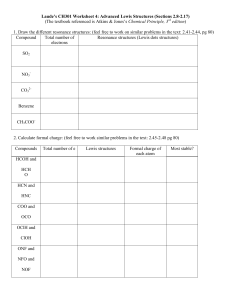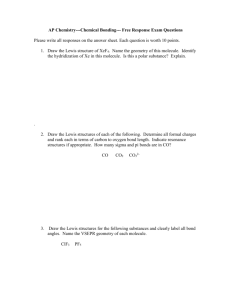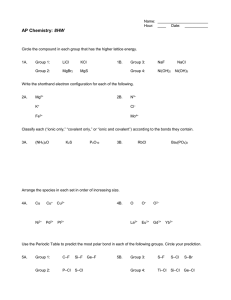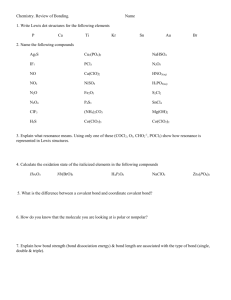CHEM111 Name ______________________________ College of Charleston Spring 2002
advertisement
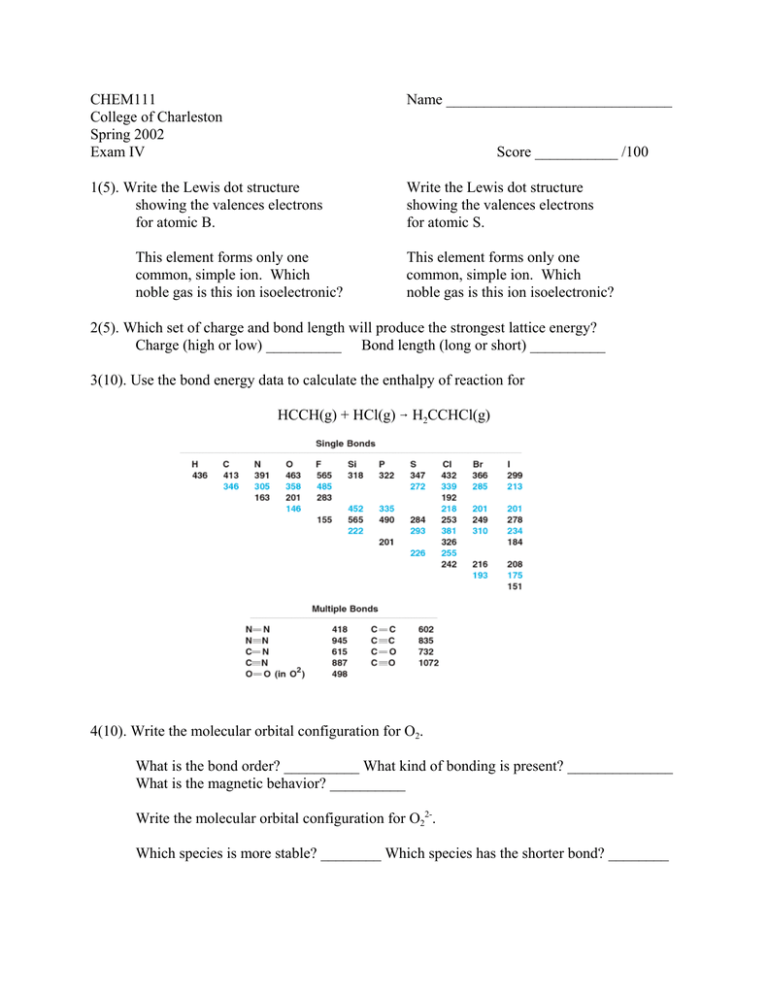
CHEM111 College of Charleston Spring 2002 Exam IV Name ______________________________ 1(5). Write the Lewis dot structure showing the valences electrons for atomic B. Write the Lewis dot structure showing the valences electrons for atomic S. Score ___________ /100 This element forms only one common, simple ion. Which noble gas is this ion isoelectronic? This element forms only one common, simple ion. Which noble gas is this ion isoelectronic? 2(5). Which set of charge and bond length will produce the strongest lattice energy? Charge (high or low) __________ Bond length (long or short) __________ 3(10). Use the bond energy data to calculate the enthalpy of reaction for HCCH(g) + HCl(g) 6 H2CCHCl(g) 4(10). Write the molecular orbital configuration for O2. What is the bond order? __________ What kind of bonding is present? ______________ What is the magnetic behavior? __________ Write the molecular orbital configuration for O22-. Which species is more stable? ________ Which species has the shorter bond? ________ 5(15). The Lewis structure for aspirin is O A C H 1 O C C O 2 C C H B H C 3 O H C C 4 H H D C H C H What are the approximate bond angles: A __________ B ___________ C ___________ What is the hybridization of the numbered atoms: 1 __________ 2 ___________ 3 __________ D ___________ 4 __________ Circle the shortest CO bond(s). 6(5). Briefly describe what is wrong with the following Lewis structure for CaSO3. O Ca S O O 7(20). Two possible Lewis structures can be written for HOCN. Calculate and indicate clearly the formal charge for each atom in each structure. Circle the preferred structure or draw a double headed arrow between the structures if both structures are resonance hybrids. H O C N H O C N 8(40). For each species, draw the Lewis structure(s), make a VSEPR sketch and identify the molecular shape, and make a valence bond “puff-ball” sketch showing the bonding. A. H2O2 B. NO2+ C. NH2- D. ClF3
